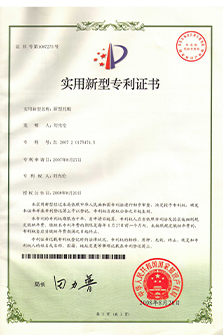 Afrikaans
Afrikaans  Albanian
Albanian  Amharic
Amharic  Arabic
Arabic  Armenian
Armenian  Azerbaijani
Azerbaijani  Basque
Basque  Belarusian
Belarusian  Bengali
Bengali  Bosnian
Bosnian  Bulgarian
Bulgarian  Catalan
Catalan  Cebuano
Cebuano  Corsican
Corsican  Croatian
Croatian  Czech
Czech  Danish
Danish  Dutch
Dutch  English
English  Esperanto
Esperanto  Estonian
Estonian  Finnish
Finnish  French
French  Frisian
Frisian  Galician
Galician  Georgian
Georgian  German
German  Greek
Greek  Gujarati
Gujarati  Haitian Creole
Haitian Creole  hausa
hausa  hawaiian
hawaiian  Hebrew
Hebrew  Hindi
Hindi  Miao
Miao  Hungarian
Hungarian  Icelandic
Icelandic  igbo
igbo  Indonesian
Indonesian  irish
irish  Italian
Italian  Japanese
Japanese  Javanese
Javanese  Kannada
Kannada  kazakh
kazakh  Khmer
Khmer  Rwandese
Rwandese  Korean
Korean  Kurdish
Kurdish  Kyrgyz
Kyrgyz  Lao
Lao  Latin
Latin  Latvian
Latvian  Lithuanian
Lithuanian  Luxembourgish
Luxembourgish  Macedonian
Macedonian  Malgashi
Malgashi  Malay
Malay  Malayalam
Malayalam  Maltese
Maltese  Maori
Maori  Marathi
Marathi  Mongolian
Mongolian  Myanmar
Myanmar  Nepali
Nepali  Norwegian
Norwegian  Norwegian
Norwegian  Occitan
Occitan  Pashto
Pashto  Persian
Persian  Polish
Polish  Portuguese
Portuguese  Punjabi
Punjabi  Romanian
Romanian  Russian
Russian  Samoan
Samoan  Scottish Gaelic
Scottish Gaelic  Serbian
Serbian  Sesotho
Sesotho  Shona
Shona  Sindhi
Sindhi  Sinhala
Sinhala  Slovak
Slovak  Slovenian
Slovenian  Somali
Somali  Spanish
Spanish  Sundanese
Sundanese  Swahili
Swahili  Swedish
Swedish  Tagalog
Tagalog  Tajik
Tajik  Tamil
Tamil  Tatar
Tatar  Telugu
Telugu  Thai
Thai  Turkish
Turkish  Turkmen
Turkmen  Ukrainian
Ukrainian  Urdu
Urdu  Uighur
Uighur  Uzbek
Uzbek  Vietnamese
Vietnamese  Welsh
Welsh  Bantu
Bantu  Yiddish
Yiddish  Yoruba
Yoruba  Zulu
Zulu types of pulley in conveyor belt
Types of Pulleys in Conveyor Belts
Conveyor belts are integral components in a wide range of industrial applications, facilitating the movement of materials from one location to another. A critical element of conveyor systems is the pulley, which enables efficient belt movement and provides necessary tension. Understanding the different types of pulleys used in conveyor belts is essential for optimizing performance, durability, and maintenance.
1. Drive Pulleys
Drive pulleys, also known as head pulleys, are pivotal in conveyor systems as they are responsible for driving the belt forward. Positioned at the discharge end of the conveyor, they are connected to the motor via a drive mechanism. Drive pulleys can have various surface finishes, such as smooth or lagged surfaces, to enhance friction and grip. This ensures efficient transfer of power from the motor to the belt, making drive pulleys foundational to conveyor operation.
2. Tail Pulleys
Located at the opposite end of the drive pulley, the tail pulley is crucial for providing tension to the belt. This pulley helps keep the belt taut and prevents slippage during operation. Tail pulleys often come with a smooth surface and are not driven by any motor. Instead, they allow the conveyed material to flow back towards the drive pulley, contributing to the overall functionality of the conveyor system.
3. Snub Pulleys
types of pulley in conveyor belt

Snub pulleys play an important role in enhancing the grip between the belt and the drive pulley. Situated at varying angles relative to the drive pulley, these pulleys increase the angle of contact between the belt and the drive pulley surface. This increased contact aids in overcoming the frictional resistance posed by heavy loads, thus preventing slippage and ensuring that the materials are efficiently transported.
4. Return Pulleys
Return pulleys are positioned along the return pathway of the conveyor belt. Their primary function is to support and guide the empty belt as it returns back to the drive pulley. These pulleys maintain the belt's alignment, preventing undesirable sagging or misalignment that could lead to damage. Return pulleys are typically smooth and designed to minimize wear on the belt.
5. Magnetic Pulleys
Magnetic pulleys are specialized components used in recycling and separation processes. They are equipped with strong magnets that help in the separation of ferrous materials from non-ferrous materials on the conveyor belt. By using magnetic pulleys, companies can effectively segregate and recover valuable materials, thereby enhancing the efficiency of recycling operations.
Conclusion
Understanding the various types of pulleys used in conveyor belts is vital for ensuring the effectiveness and durability of conveyor systems. By employing the right combination of drive, tail, snub, return, and magnetic pulleys, industries can optimize their material handling processes, reduce downtime, and improve overall productivity. As technology advances, innovations in pulley design and material will further enhance the capabilities of conveyor systems, paving the way for more efficient operations in the future.
-
Revolutionizing Conveyor Reliability with Advanced Rubber Lagging PulleysNewsJul.22,2025
-
Powering Precision and Durability with Expert Manufacturers of Conveyor ComponentsNewsJul.22,2025
-
Optimizing Conveyor Systems with Advanced Conveyor AccessoriesNewsJul.22,2025
-
Maximize Conveyor Efficiency with Quality Conveyor Idler PulleysNewsJul.22,2025
-
Future-Proof Your Conveyor System with High-Performance Polyurethane RollerNewsJul.22,2025
-
Driving Efficiency Forward with Quality Idlers and RollersNewsJul.22,2025





























